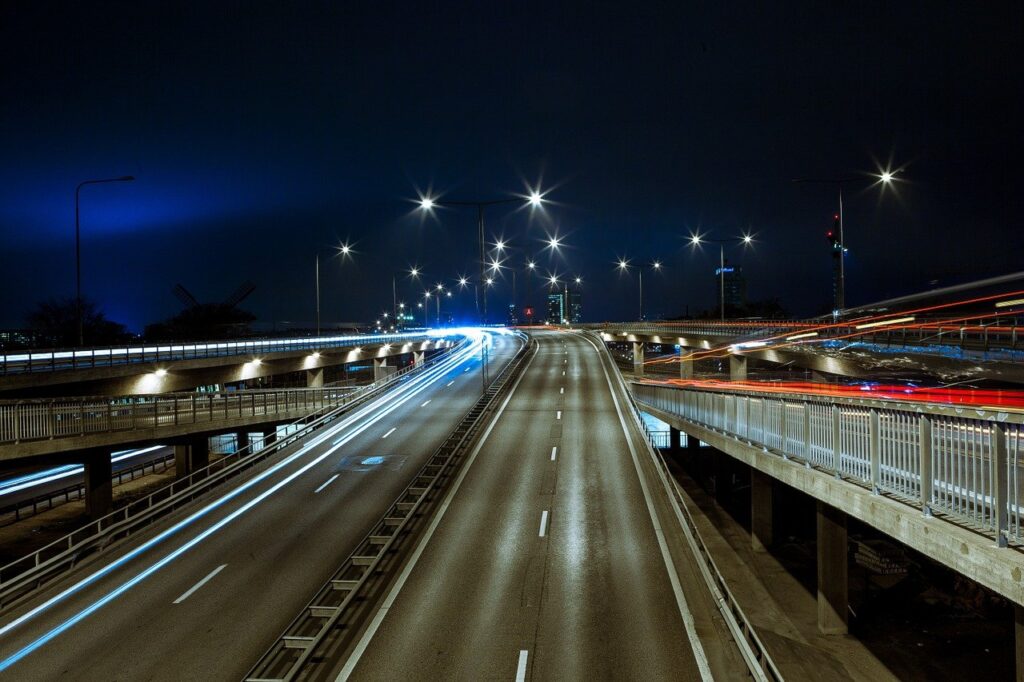CE3I
22302

Multiple Choice Questions (MCQs)
1 Economic survey of a proposed road project includes a detailed survey of- (A) Agricultural and industrial product available in the area
- (B) Resources of income to local bodies as toll tax
- (C) Origin and destination of traffic
- (D) Soil characteristics at various places
2 An undesirable element to be avoided while fixing the alignment of the highway is
- (A) Straight and short route
- (B) Right angle crossing for bridges, culverts and level crossing
- (C) Rising ground and high embankment
- (D) Proximity to place for worship
3 A precise survey is
- (A) Reconnaissance
- (B) Preliminary survey
- (C) Final location survey
- (D) Economic survey
4 According to transported tonnage vehicle per day in Heavy traffic Roads
- (A) Above 600
- (B) Above 1524
- (C) 251 to 600
- (D) 1017 to 1524
5 The road connecting district headquarters of one state to the district headquarters of another bordering state is called
- (A) National highway
- (B) State highway
- (C) Major district road
- (D) Expressway
6 Nagpur Road Plan is developed in
- (A) 3rd Twenty-year plan 1981-1983
- (B) 2nd Twenty-year plan 1961-1981
- (C) 1st Twenty-year plan 1943-1963
- (D) 4th Twenty-year plan 1983-1985
7 Which factors are affected to design alignment of roads
- (A) Economical
- (B) Short
- (C) Utility
- (D) Obligatory points and curve
8 1st field survey are carried out to finalize the highway alignment
- (A) Economic survey
- (B) Reconnaissance survey
- (C) Preliminary survey
- (D) Location survey
9 Biggest Highway in INDIA
- (A) NH 44
- (B) NH 49
- (C) NH 45
- (D) NH 47
10 The width of carriageway for Two Lane with raised kerbs
- (A) 7m
- (B) 5.5m
- (C) 7.5m
- (D) 3.75m
11 Side slopes for embankment and cutting (Ordinary soil)
- (A) 2:1 and 1/4:1 to1/8:1
- (B) 2:1 and nearly vertical
- (C) 2:1 and 1:1 to 1/2:1
- (D) 2:1 and 1/12:1 to 1/16:1
12 The min. Coefficient of lateral friction for highway
- (A) 1
- (B) 0.4
- (C) 0.15
- (D) 0.5
13 The natural factor affecting influencing of Camber is
- (A) Type of material used of wearing coarse
- (B) Topography of the area
- (C) Nature of subsoil met with
- (D) Amount of rainfall
14 For High Bituminous surface or Cement Concrete surface the most common camber is
- (A) 1 in 20
- (B) 1 in 60
- (C) 1 in 48
- (D) 1 in 36
15 The rate of change of superelevation for rolling terrain
- (A) 2.5V^2/R
- (B) 2.7V^2/R
- (C) 2.8V^2/R
- (D) V^2/R
16 Design speed for Plain and Steep area for NH and SH & for MDR
- (A) 80-100 and 20-30
- (B) 60-65 and 20-30
- (C) 65-80 and 30-40
- (D) 40-50 and 20-25
17 Limiting Gradient is adopted in
- (A) Extraordinary situation
- (B) Steeping gradient
- (C) Easily drainage of water from road surface
- (D) Adopted while making alignment of road
18 Exceptional Gradient in plains is
- (A) 1 in 15
- (B) 1 in 20
- (C) 1 in 30
- (D) 1 in 40
19 For sight distance calculation ‘Time of perception’ and reaction depends on
- (A) Speed of the vehicle
- (B) Gradient of road
- (C) Alertness of driver
- (D) Nature of pavement
20 Determine the permissible speed on curve having radius of 150m with superelevation of 15% and coefficient of friction 0.16
- (A) 71.42kmphr
- (B) 74.89kmphr
- (C) 76.84kmphr
- (D) 78.56kmphr
21 The normal elevation of driver’s eyes and non-passing sight distance a stationary object of this height is considered
- (A) 100cm and 10cm above the road level
- (B) 120cm and 15cm above the road
- (C) 200cm and 100cm above the road level
- (D) 150cm and 50cm above the road level
22 Calculate the length of SSD for a two-way traffic in a single Lane road. The design speed is 70kmph. Assume reaction time of driver is 2.5 sec. And coefficient of friction is 0.6 for slopping road with (A) Ascending slope of 2% (B) Descending slope of 3%
- (A) 80.79m and 80.818m
- (B) 79.80m and 79.89m
- (C) 78.51m and 78.43m
- (D) 81.00m and 81.897m
23 On sharp curves widening of the carriage way is done by
- (A) Providing more width on the inner curve
- (B) Providing more with on the outer curve.
- (C) Distributing half on inner and half on the outer
- (D) Distributing 3/4 on the outer and 1/4 on the inner
24 Estimate the extra widening required for a pavement width 7m two Lane on a horizontal curve of radius 250m. If the longest wheel Base of vehicle expected is 7m design speed is 70kmph. IRC recommended values of extra widening is 0.6m
- (A) 0.655m
- (B) 0.677m
- (C) 0.679m
- (D) 0.662m
25 A valley curve is composed of just two transition curves without any circular curve in between to
- (A) Minimize the length of valley curve
- (B) Increasing sight distance
- (C) Minimize the time of acting of down thrust on tyers
- (D) Nullify the centrifugal force